Lesson 002 – Cooling effects of volatile liquids
You need:
Step 1: iTriangle MASTER online, 2 bowls (we used plastic bottles), water resistant thermometer, pure alcohol, water
Step 2: iTriangle MASTER online, 2 bowls, water resistant thermometer, pure alcohol, water, 2in1 temperature and humidity sensor, buzzer
|
|
|
|
|
|
Waterproof thermometer |
Buzzer |
2 in 1 sensor – temperature and relative humidity |
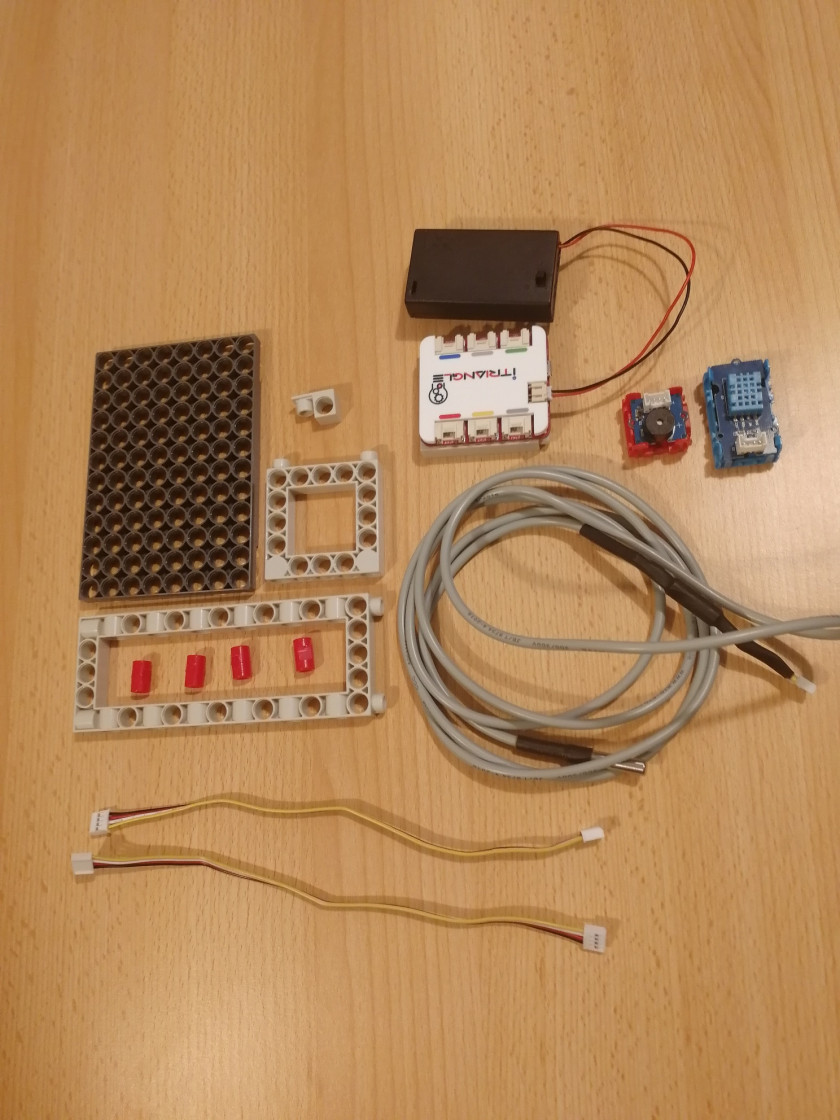
Introduction:
There are times when it's important to cool down. We don't mean times when we're angry, but situations when things are too hot for us.
Task:
Two tasks are prepared for you. Both assess the difference between the evaporation of water and alcohol. Can you guess which one evaporates more quickly and is therefore better at cooling the surface it is applied to? Think about it and try to prove it with the following experiments.
Tutorial:
Step 1:
- Construct a simple stand with iTriangle online and connect the sensors and components as pictured below. Connect iTriangle online and upgrade its firmware by following these steps.
- Pour water and alcohol into separate bowls. Place the thermometer into the bowl with water and wait for the temperature to stabilize. After another five seconds, remove the thermometer and sharply shake off any excess liquid and leave it to dry freely.
- Start the graphical measurements.
- The temperature should start lowering. When the temperature starts rising again, you can finish your measurements. Follow same instructions using the alcohol instead of water.
- When finished, compare the data and decide which of the two liquids lowers the temperature more quickly and is more volatile.
Step 2:
- Re-use the stand from the previous step with iTriangle online.
- Pour water and alcohol into separate bowls. Place the thermometer into the bowl with alcohol and wait for the temperature to stabilize. After another five seconds, remove the thermometer and sharply shake off any excess liquid and leave it to dry freely.
- Start the program.
- The thermometer rod's temperature will be measured ten times, while the 2in1 sensor will measure the temperature and humidity of the environment.
- There are two possible outcomes.
- If the temperature of the environment is higher than the temperature of the thermometer rod, the buzzer will produce a long tone.
- If the temperature of the environment is lower than the temperature of the thermometer rod, the buzzer will produce a short tone.
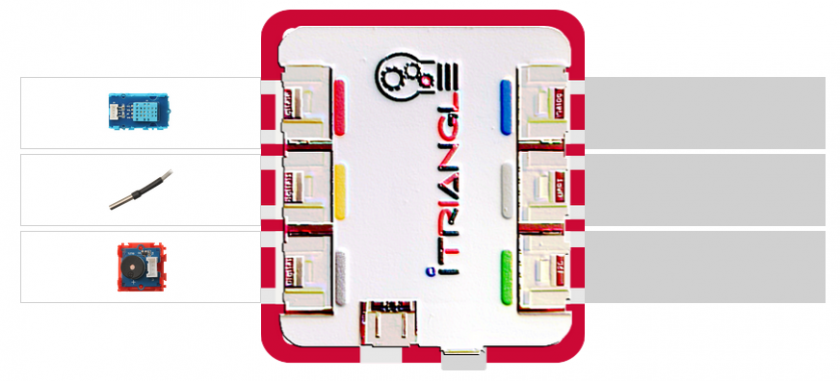
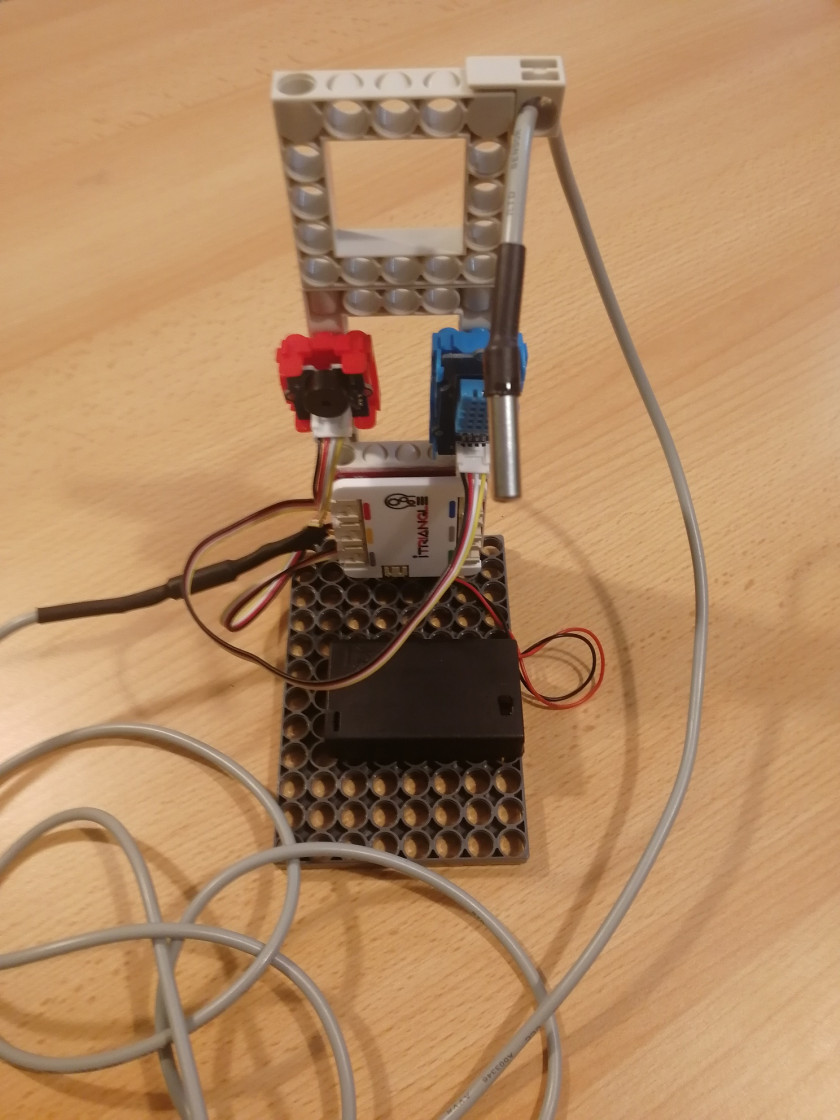
Extra mile:
You can adjust the program any way you want (change the buzzer's tone or add more sensors)
Examples of good practice:
Technical notes:
After removing the thermometer from the liquid, make sure to sharply shake off any excess liquid. This will also make the liquid cover the sensor in a thin layer needed for measurements.
Let the liquid stand at room temperature for around 30 minutes before starting the experiment. It is important that the water and alcohol are the same temperature as the surroundings.
Because the water-resistant thermometer measures at its tip, dipping the rod just halfway into the liquid is enough.

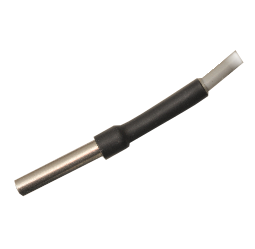
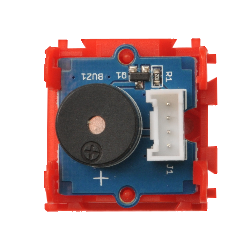
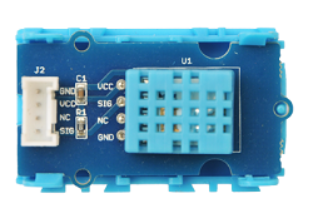
Žádné komentáře